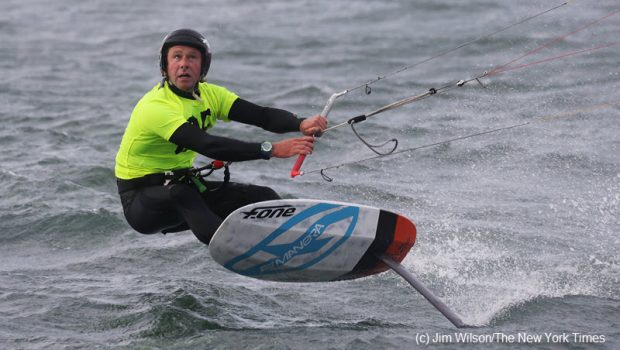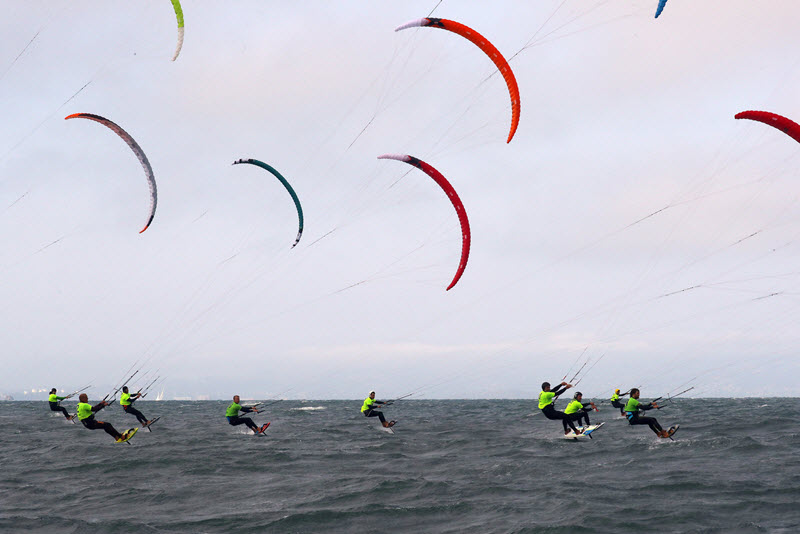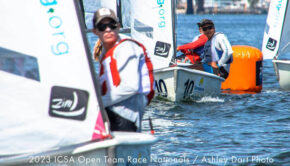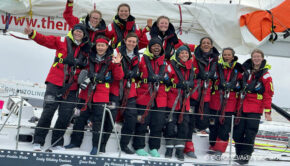Golfing is so yesterday
Published on August 20th, 2017
Nellie Bowles reports for The New York Times on where the wealthy tech crowd is spending their time away from the office.
What happens in the San Francisco Bay every Thursday night does not look real or even possible, and it certainly does not look safe. Dozens of people skim across the waters at speeds of up to 40 miles per hour, kites far ahead and their boards floating two feet above the chop of the waves. They move so smoothly and quietly that some riders are on their cellphones.
They call it hydrofoiling — or, if you’re hip to it, foiling. And every week, the foilers of San Francisco race.
“It’s like flying,” said Ariel Poler, a 50-year-old start-up investor, standing by the winged doors of his Tesla and pulling on body armor and a helmet. “The board doesn’t touch the water. It’s like an airplane wing.
“It’s like a powder day,” he added, referring to snow skiing.
He walked into the water, strapped his feet onto the small, oddly shaped board and latched his kite onto his harness. Then he leaned back in the water like an overturned turtle. As the kite caught wind, Poler popped up and blasted toward Alcatraz Island.
The Silicon Valley elite have long loved extreme water sports (there is an entire tech and kitesurfing conference circuit). Now they have upgraded them. And suddenly, the tech world is participating in a sport most of the country has never seen.
In workshops around San Francisco and Hawaii, craftsmen and technologists are hooking hydrofoils — a lifting surface attached to the bottom of a watercraft — onto seemingly everything. Versions include a jetfoiler, which looks like a surfboard with a rudder and a tiny hidden motor; the SUP foil, a stand-up paddle board with a foil; and the kitefoil, which is like a kiteboard but has a foil.
The Oracle co-founder Larry Ellison made foils famous when they appeared on the America’s Cup boats in 2013, leading to a panic over cost and safety. Since then, private investors around Silicon Valley have been bankrolling the technology.
“Now we all foil,” Poler said.
Just as it did for the America’s Cup, foiling adds both speed and danger.
“Falling from four feet in the air at 40 miles an hour, the wipeouts are pretty spectacular,” said Joey Pasquale, 34, a tugboat captain and foiler. “I broke two ribs earlier this year.”
It was a typical cold summer night in San Francisco as the racers competed.
Stretching against his van was Johnny Heineken, 29, one of the world’s top foilers, and a mechanical engineer for Alphabet Inc.’s experimental technologies lab, X.
“It’s a combination of tactical sailing and a high-performance action sport,” said Heineken, who wore a straw hat and Tevas. “And then it just feels great. You fly around the bay.”
Nico Parlier, 22, a professional foiler visiting from France, said that the French racers had been using the technology for years but that Americans took it more seriously.
“They took it to a different level,” Parlier said. “It’s not a very cheap sport, and people here are very wealthy, so it’s a good combination.” – Full story










 We’ll keep your information safe.
We’ll keep your information safe.